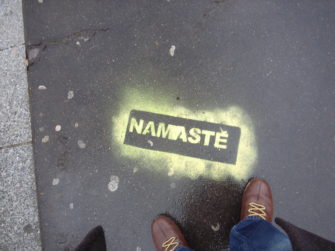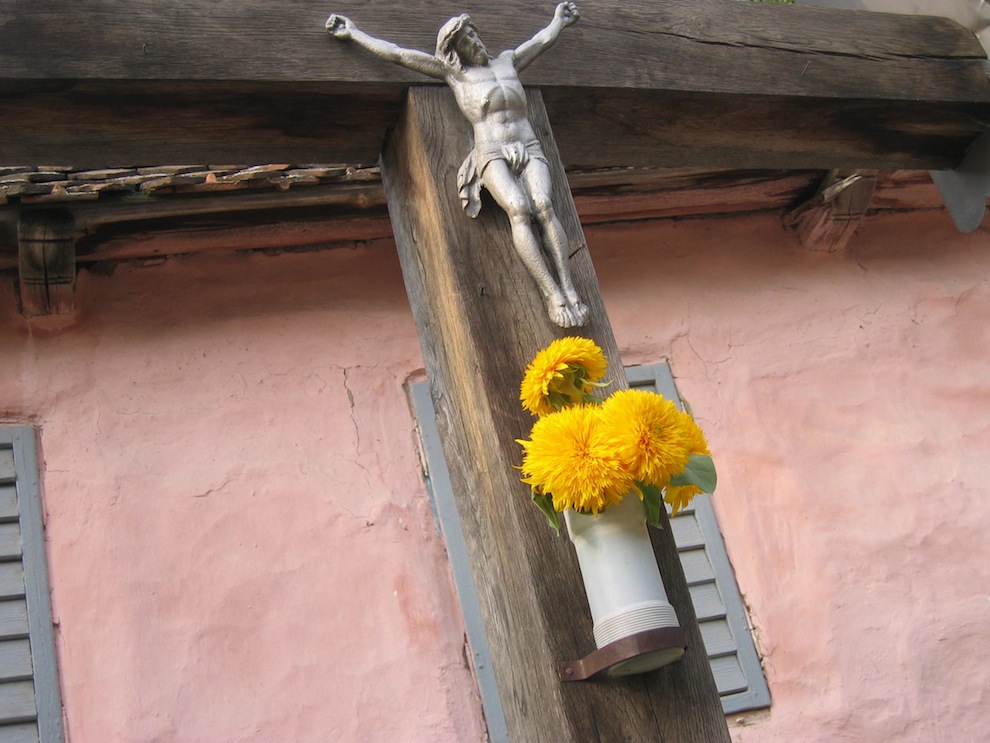
Prince Charles, arriving at the Prince’s Trust Awards in March, was about to go for the handshake.
But, mindful of the new social distancing rules, he quickly improvised an off-the-cuff alternative.
He was then seen offering Ant and Dec, amongst others, a royal namaste, the traditional Hindu greeting putting palms together and fingers pointing up.
“I do it all the time,” he joked.
But the Prince may have a point. With social distancing here to stay, our familiar greetings are suddenly off limits.
All change
Handshakes and hugs were amongst the first victims of the global pandemic.
Air kisses on a quarantine-free trip to France could be met with a gallic shrug, and the traditional Maori hongi, noses pressed together in greeting, consigned to the pages of history.
While both Boris Johnson and Donald Trump happily pressed the flesh pre-lockdown, some have called time on the handshake.
Anthony Fauci, a leading American public health official, told the Washington Post:
“I don’t think we should ever shake hands again, to be honest with you.”
It’s a hard habit to break, however.
The humble handshake featured in ancient Greek and Roman art as a symbol of peace.
Human contact
Greeting gestures remain important to express genuine emotion with some 55 per cent of human communication attributed to body language by the psychology professor Albert Mehrabian.
Perhaps our travel experiences could offer a contact-free solution to the dilemma?
Looking to other countries, we find a ready supply of everyday greetings far more acceptable than the ham-fisted knuckle bump and the comical, so-called Wuhan shake foot-tap, which both appeared during the early days of lockdown.
Alternative gestures
The Asian countries are the natural choice to find new non-contact greetings.
For example, the Thai wai, whereby you bow the head and put palms together, is a traditional gesture of openness.
It’s popular throughout Southeast Asia and used in both prayer and dance as well as greetings.
Dr Sylvie Briand, Director of Pandemic and Epidemic Diseases at the World Health Organisation recently tweeted her approval.
“We need to adapt to this new disease,” she wrote.
The formal bow, meanwhile, was introduced to Japan in the seventh century and remains de rigueur in a country that prides itself on adhering to social etiquette.
We could adopt this greeting for more formal settings with the degree of bow reflecting the respect and reverence you attribute to the other person.
Otherwise we should look to the Middle East for a more spiritual symbol.
Simply place the right hand on the heart, which is sacred in Islam as the seat of the soul, and say as-salaam alaikum, meaning “peace be upon you”.
Maybe, instead, it’s time for a radical rethink as part of the new world order.
The Hawaiian shaka sign, curling the middle three fingers while extending thumb and little finger, could be adopted beyond the surfing community, who know it as the ‘hang loose’ symbol.
More radical still is the Zambian ‘cup and clap’, whereby you cup your hands together and clap a couple of times while offering the greeting muli bwanji.
Sign of respect
Most viable of all, however, seems to be the traditional Hindu namaste, which is rapidly moving beyond the yoga mat to take centre stage.
The Sanskrit term, meaning ‘the highest in me salutes the highest in you’, is the natural successor to the handshake.
Besides, it’s good enough for the Dalai Lama.
And it’s far preferable to watching Health Secretary Matt Hancock close a Government press briefing with a Dr Spock-style Vulcan hand salute, staring down the camera with the words, “Live long and prosper.”
It seems Prince Charles may have inadvertently set a trend for us all to follow.
Namaste to that.
Read the edited version in Mail Travel.
- Liked this? Try also How I found my voice at the singing B&Bs.
- Sign up to my newsletter for more articles and writing workshops.
